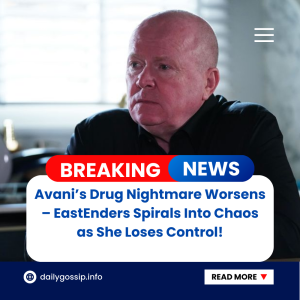This “movie” centers around the dramatic departure of Sonia Fowler from Walford, set against the backdrop of the Queen Vic explosion and the lingering fallout from her relationship with Reiss Colwell. The narrative intricately weaves together Sonia’s personal crisis with the larger community tragedy, creating a powerful and emotionally resonant exit storyline.
The film opens by establishing Sonia’s fragile state of mind in the immediate aftermath of the Queen Vic disaster. The explosion, a central event in this arc, is not merely a physical catastrophe; it acts as a catalyst, triggering significant character changes, exposing hidden truths, and ultimately prompting Sonia to re-evaluate her entire existence in Walford. We see Sonia grappling with the trauma of surviving such a devastating event, the shock and disorientation, which is then compounded by the weight of the shocking revelations about her partner, Reiss. The film portrays her as a survivor, but one deeply scarred and shaken.
The film delves into the details of Reiss’s dark past, meticulously revealing the extent of his deception and the heinous crimes he committed. We witness Sonia coming to terms with the horrifying reality that Reiss was, in fact, responsible for his wife Debbie’s death, and not only that, he allowed Sonia to be implicated in the crime, leading to her wrongful imprisonment. This betrayal shatters Sonia’s trust in a profound and irreparable way, forcing her to confront the fact that the man she loved and trusted was capable of such calculated cruelty and manipulation. The film portrays this realization as a turning point for Sonia, marking the beginning of her disillusionment with Walford and her life there.
The narrative also revisits the traumatic events involving Bianca Jackson, Sonia’s sister, adding another layer of complexity to Sonia’s decision. The film poignantly portrays how Reiss held Bianca captive, subjecting her to a terrifying ordeal, and his indirect but significant involvement in the Queen Vic fire, which tragically led to the death of Martin Fowler, a former flame of Sonia’s and a deeply significant figure in her past. These revelations serve as further blows to Sonia, deepening her sense of devastation and contributing to her growing sense of alienation from the community she once called home. She is forced to confront not only Reiss’s personal betrayals but also the wider consequences of his actions on the people she cares about.
As Sonia grapples with these earth-shattering revelations, the film depicts her internal struggle with raw honesty and emotional depth. She is portrayed as a woman torn between her deep-rooted loyalty to her family and her desperate need to escape the increasingly toxic and dangerous environment of Walford, which is now irrevocably tainted by Reiss’s actions and the tragic events surrounding the explosion. The film uses flashbacks and dream sequences to illustrate Sonia’s inner turmoil, her memories of happier times in Walford juxtaposed with the present-day reality of loss, betrayal, and fear.

The film emphasizes that Sonia’s departure is not a sudden, impulsive decision but rather the culmination of a series of deeply traumatic events that have gradually eroded her sense of belonging and safety in Walford. The explosion at the Queen Vic, a dramatic and visually stunning sequence, serves as a stark and brutal reminder of the ever-present danger and unpredictability of life in the Square. It is a catalyst that forces Sonia to confront the fragility of life and the need to prioritize her own well-being.
Amidst this turmoil, Sonia is also shown dealing with the practicalities of her life, most notably caring for her newborn baby. The film sensitively portrays the challenges of new motherhood in the context of personal crisis and community tragedy. Sonia’s vulnerability is heightened as she strives to protect her child in an environment that feels increasingly unsafe and unstable. This adds a layer of maternal urgency to her desire to leave Walford.
The film also highlights Sonia’s interactions with other characters as she prepares to leave, offering poignant moments of farewell and closure. These interactions provide a sense of finality to her relationships and allow her to say goodbye to the people she cares about, perhaps leaving some relationships open-ended for a potential return. We see her seeking support and understanding from her family and close friends, confiding in them her reasons for leaving and expressing her fears and hopes for the future. The film also depicts the more difficult conversations, where Sonia must confront those who may not understand or agree with her decision, showcasing her newfound resolve and independence.
The climax of the film centers on Sonia’s final, resolute decision to leave Walford. This decision is portrayed not as an act of weakness or defeat, but rather as a courageous act of self-preservation, a powerful choice to prioritize her own emotional and physical well-being and the future security and happiness of her child. The film emphasizes the immense emotional weight of this decision, depicting Sonia leaving behind not just a place, but a significant part of her history, her identity, and the people she has loved and lost.
The film’s ending depicts Sonia’s departure, leaving the door open for a potential return. The final scenes suggest that while Sonia desperately needs to leave Walford to heal, to find peace, and to forge a new path for herself and her child, her deep ties to the community and her enduring love for her family may eventually draw her back to the Square. The film concludes on a note of ambiguity and hope, leaving the audience to speculate about Sonia’s future and the possibility of her eventual return to Walford.





